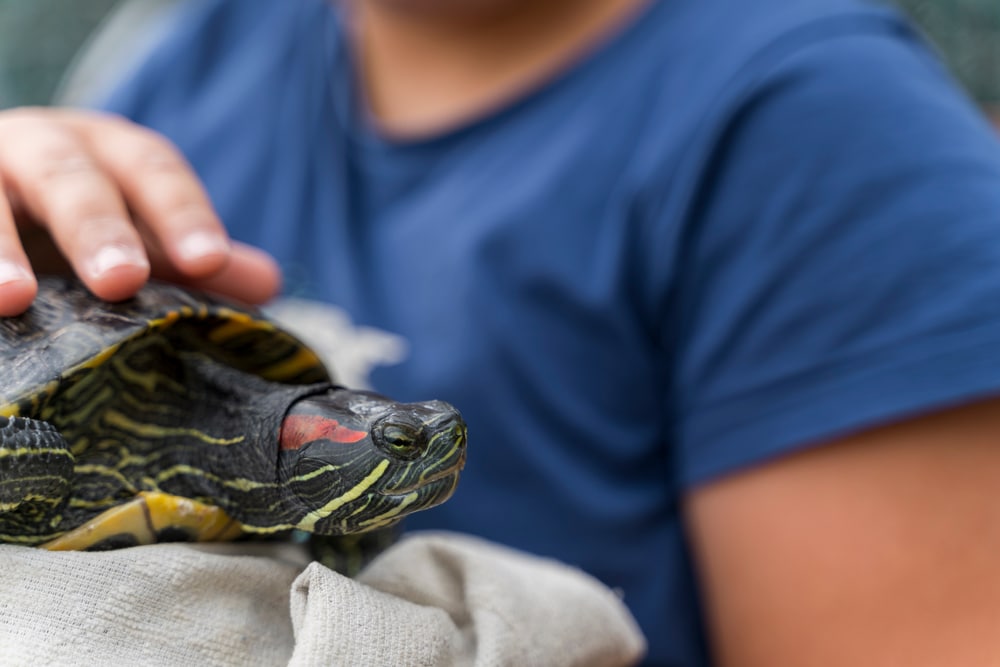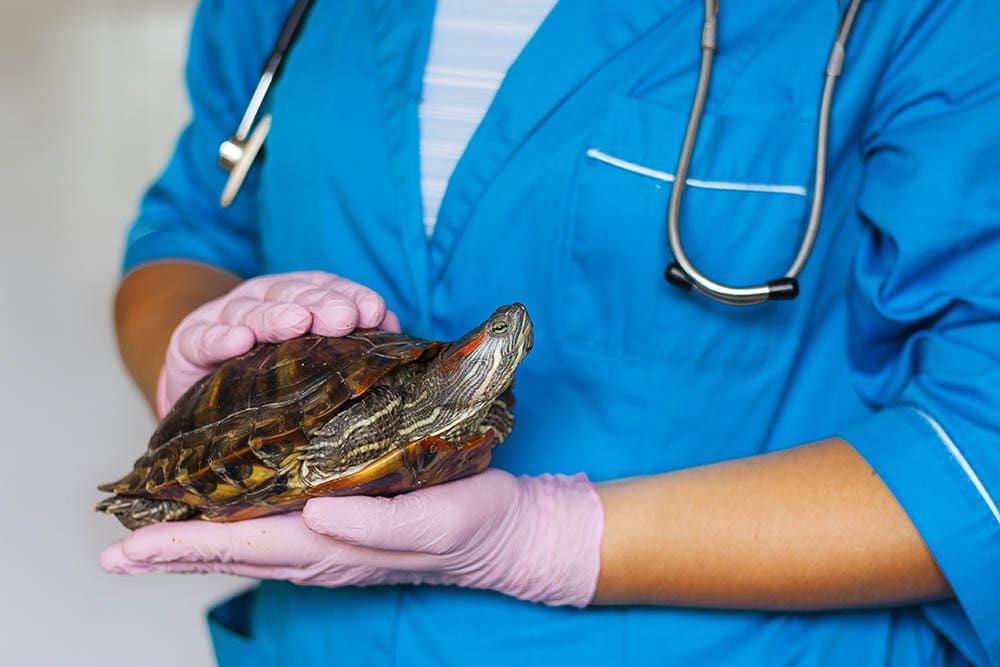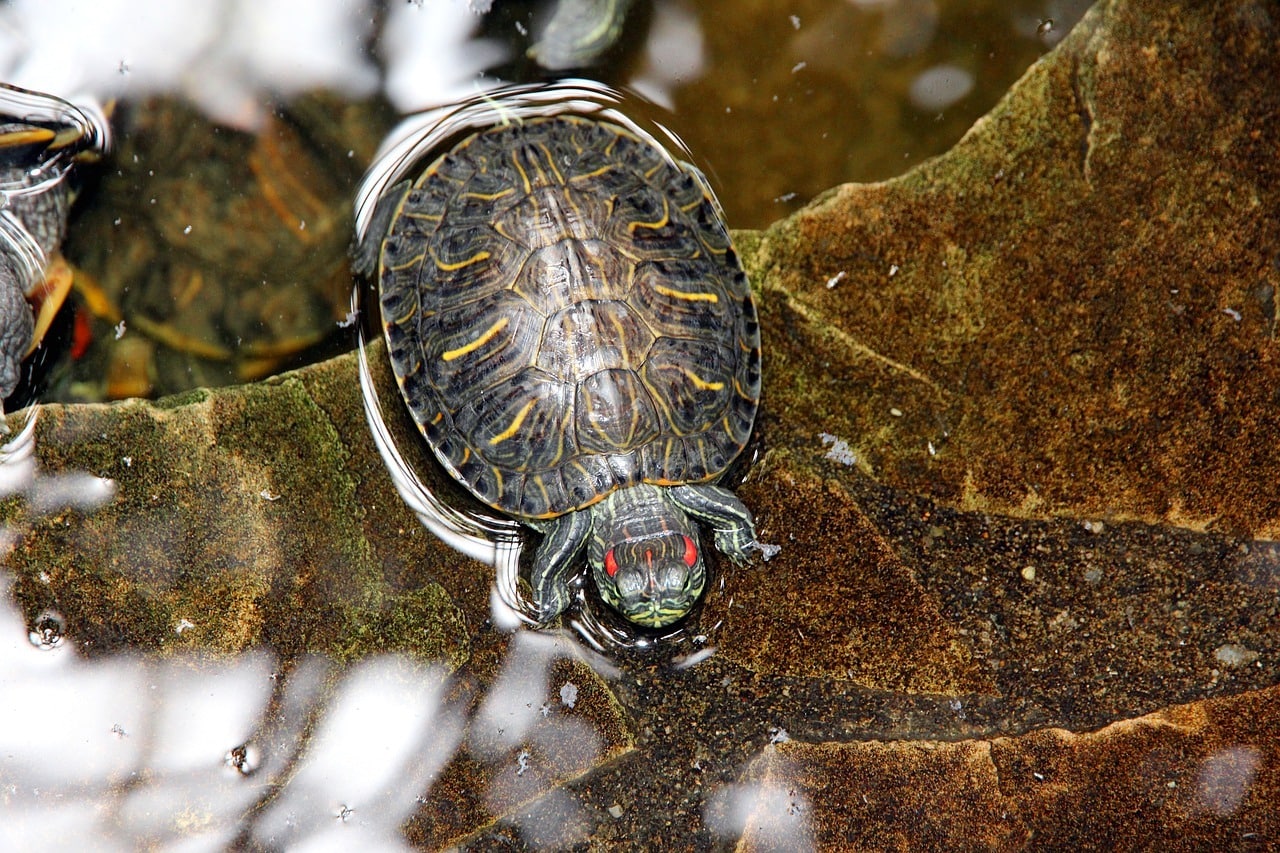
Turtles with their big, bulky bodies, slow demeanors, and sweet expressions are loved by many. While species may look vastly different from each other, they all have a protective shell to protect their soft tissue.
You might think that a shell is comparable to your own hair—no nerve endings, no feeling. However, what you don’t know about a turtle’s shell just might surprise you. These creatures are much more complicated than many realize. Let’s find out more about this incredible organ.

The 7 Most Fascinating Facts About a Turtle’s Shell
1. The Original Purpose of a Shell Is Not to Hide
One hundred fifty million years ago, a species of turtle in Europe called a Jurassic turtle roamed the earth. Even though it was originally thought that turtles used their shells for protection, this particular turtle made researchers believe otherwise. Rather than having a shell specifically to hide from predators, one hypothesis suggests that the shell actually enhances their predatory instincts. Turtles can lunge forward quickly to capture small fish and other food sources.
Since the overall design of the turtle doesn’t necessarily protect the head, scientists believe they evolved to pull back and lurch forward to score a meal. Even though they might have developed this way, the shell is still a perfect protective layer for the turtle.
2. A Shell Is a Shield of Armor & Camouflage
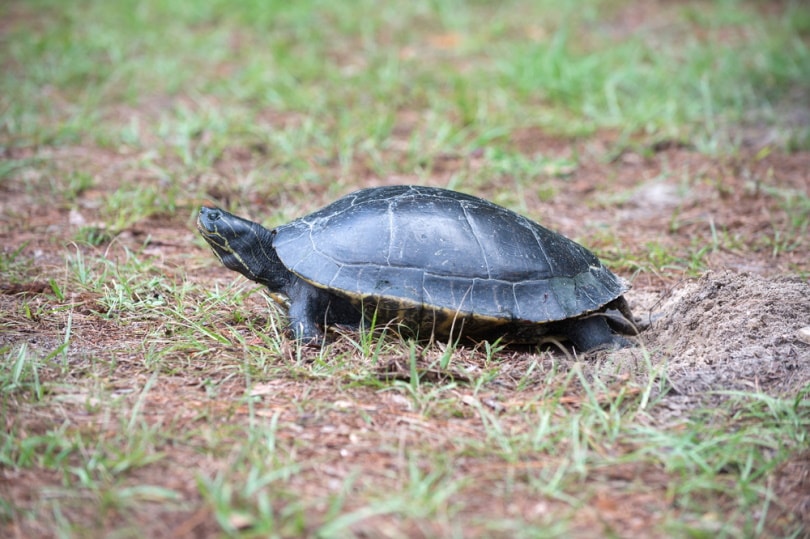
One of the most apparent reasons a turtle has a shell is to protect them from outside elements. A turtle shell is solid and made of hard material to protect its body from harm. This is especially useful, considering many hide in spots that can be stepped on or rolled. They also serve as camouflage, helping them blend in with their environment. A predator could walk right by and never know due to the disguise.
3. Shells Are Considered an Organ with Nerves
It is a big misconception that turtle shells cannot feel touch on the surface. This is actually false. Much like our human skin is the largest organ in our physical makeup, a turtle shell is considered an organ, too. Turtle shells have nerve endings to feel on the outside and send signals to the brain. Even though feeling pain is a lot less if a turtle is impacted on their shell, it can still feel it. A turtle shell is also valuable for picking up patterns, vibrations, and atmosphere to let them know what’s lurking nearby.
4. The Top and Bottom of a Shell are Different
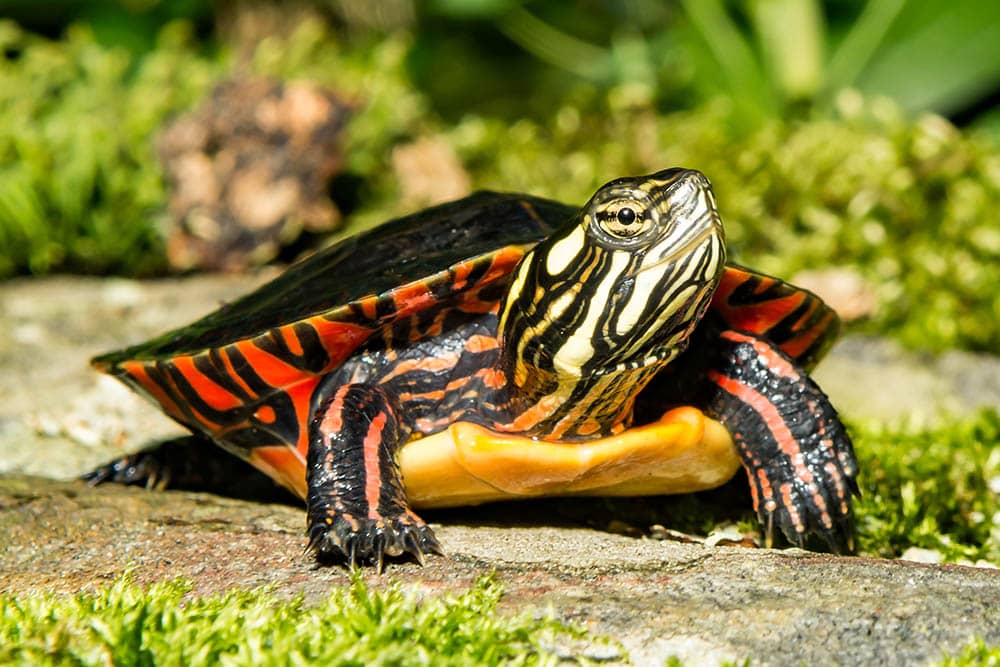
A turtle’s shell has two main parts. The top (or dorsal) is called the carapace, and the bottom (or ventral) is called the plastron. Each comes together to serve a well-rounded function. If you have noticed the scale-like grooves on the shell, these are called scutes—and most turtles have about 13.
5. Shells Can Split, Crack, and Break
Even though turtle shells are incredibly strong, protecting them against attacks, falls, and other harm, they can still get cracks. For example, cracks are prevalent if a turtle is hit by a car or falls down an incline. If it doesn’t result in death, these cracks can get infected, causing your turtle to suffer. If you have a captive turtle, these cracks and infections might be easier to treat with veterinary care and the proper round of antibiotics. But turtles in the wild do not have the same advantage.
6. Shells Can Serve as Weapons During Breeding Season

It may be difficult to imagine a turtle fighting. While finding a mate, male turtles might show aggression towards each other and make efforts to win the rivalry.
Turtles can use their muscles and long necks to strategically flip over other turtles. Because the motion is so fast and sometimes aggressive, it can cause damage and injury to the other turtle’s shell. Not only can turtles damage the same sex, but they can also really hurt females during breeding.
7. Shells Can Help Turtles Swim Faster
Turtles might be slow on land, but that same sentiment does not always extend to the water. Terrapins and turtles that live in the water are incredibly efficient swimmers, sometimes swimming from 3 to 22 mph—depending on the species. The sleek shell helps them coast effortlessly through the water, providing a hydrodynamic advantage.

Conclusion
Turtles are fascinating creatures, and their shells might be one of the most interesting things about them. After all, it’s not like a hermit crab shell that they can go in and out of. Their shells are adhered to their body and have nerve endings, feeling, and function. It’s so interesting to learn about the different types of wild animals, nature is a fantastic thing!
Featured Image Credit: Suzanne Tucker, Shutterstock


